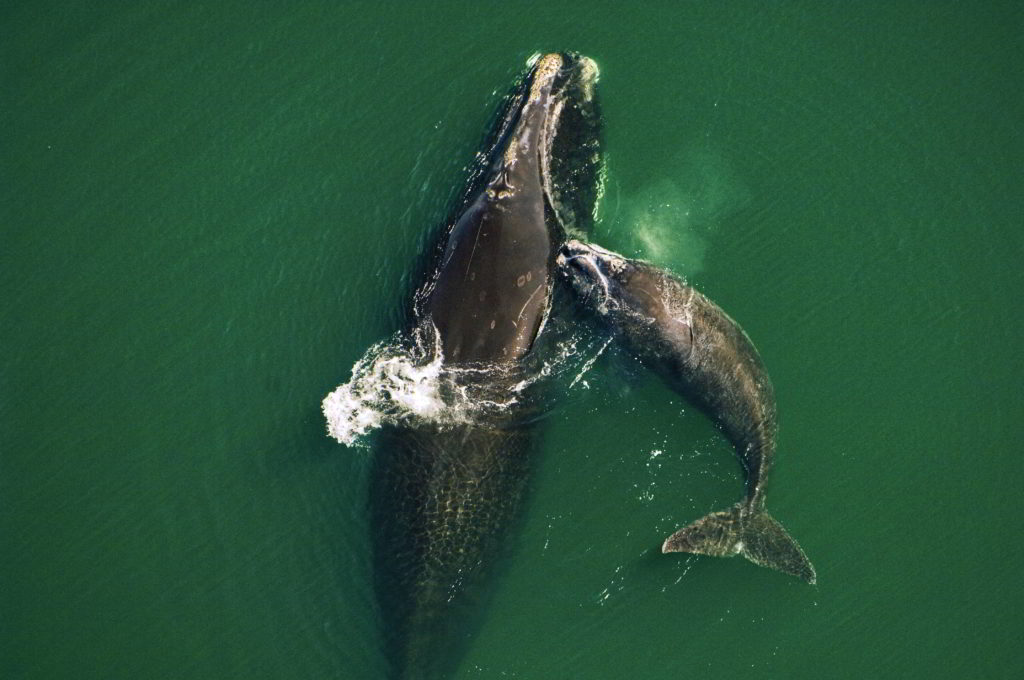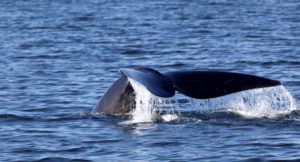Why we must protect North Atlantic right whales’ ‘migration superhighways’
For the first time, WWF’s Protecting Blue Corridors report maps out 845 routes of migratory whales, highlighting 30 years of satellite tracking data gathered by more than 50 research groups worldwide. Blue corridors are migration superhighways that allow whales to move between critical habitat essential for their survival — areas where they feed, mate, give birth, nurse young and socialize.
But mounting threats from climate change, ship strikes, entanglement in fishing gear, underwater noise pollution, loss of habitat and prey are making their migrations increasingly dangerous.

Six out of the world’s 13 great whale species are classified as Endangered or Vulnerable, even after decades of protection. The latest North Atlantic right whale estimate puts the population at its lowest point in 20 years. With only 336 individuals remaining, the North Atlantic right whale is considered Critically Endangered, meaning it faces an extremely high risk of extinction in the wild.
North Atlantic right whales migrate seasonally along eastern Canada and the U.S.
In the winter months, the species is found in their calving grounds off South Carolina, Georgia, and northeastern Florida. Then in the spring they start slowly moving north to their feeding and mating grounds in the Gulf of Maine and eastern Canadian Atlantic
However, in recent years warming waters have pushed the population further north to feed as they follow their cold-water prey — copepods, a type of small crustacean — into the Gulf of Saint Lawrence. From May to December, about 40 percent of the population now utilize this region where ship strikes, and fishing gear entanglements are major threats.
For the population to recover, less than one right whale a year can die from human interaction across the species range. But more than 80 per cent of right whales have been entangled at least once in their lifetime. Since 2017 alone, there have been 50 right whales recorded as dead or seriously injured and likely to die from their injuries.

In recent years, high mortalities and injuries have led conservationists, scientists, U.S. and Canadian governments, and fishing and shipping industries to develop collaborative efforts in an attempt to reduce entanglements and collisions between ships and whales.
To help protect their important feeding grounds in the Gulf of St. Lawrence and the Bay of Fundy, for example, the Canadian government has implemented dynamic fishing closures and speed restriction zones — areas to be avoided or requiring reduced vessel speeds — which are triggered when whales are detected.
But their migration corridor remains perilous
Cabot Strait, the entrance to the Gulf of St Lawrence, is an important route for right whales but is currently only protected by a voluntary vessel slow down during the migration period. Participation has been low since its establishment, with only 32 per cent of vessels travelling under the recommended 10 knots.
Increasing vessel activities in the region is also a cause of concern. Cruise ships will soon be returning to Canada’s Atlantic region after two years of absence due to the pandemic. These large ships often travel at fast speeds and their typical touring routes overlap with right whale habitats in the Gulf of St Lawrence — some of which are protected, others not.
In the fall, the peak of cruise season overlaps with the right whale migration corridor off the Atlantic coast, much of which also lacks protection.
If their population continues to decline, North Atlantic right whales may go extinct in less than 30 years. While the task is daunting, protecting their blue corridor from these major threats — including dynamic and mandatory vessel slowdowns and reduction of vertical fishing lines — is possible, and critical, to ensuring the survival of this species.

